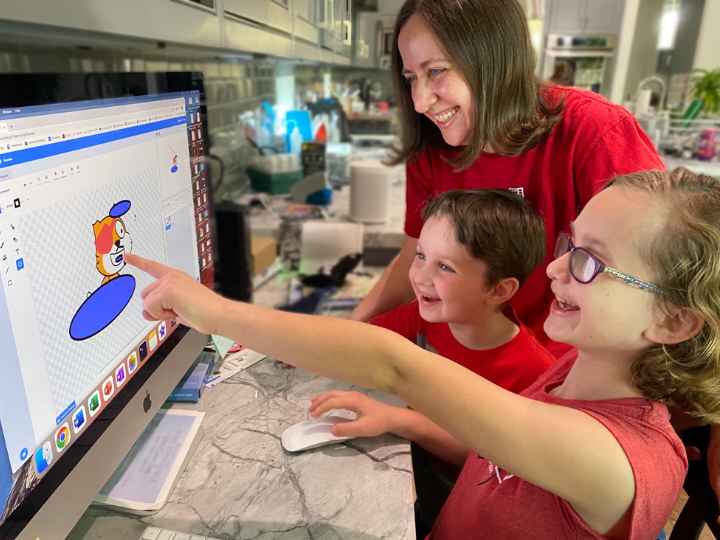
If you are a third grader, your chances of growing up to be a computer scientist is likely to heavily depend on your gender — a situation Allison Master says is just plain wrong.
How can Master be certain? Because third grade girls are telling her so.
“Our new research addresses a big, longstanding issue in STEM education, that women are highly under-represented in fields like computer science. It’s actually one of the most challenging fields for women’s representation. Only about 20% of people who major in computer science are women,” said Master, assistant professor of psychological, health and learning sciences at the University of Houston College of Education. She also is lead investigator of a new study published in the journal Early Childhood Research Quarterly.
The study traces the inequality back to early elementary-school ages, to see whether coding and other computer science tasks will be welcomed by most boys but likely shunned by girls. But it’s not the children, themselves, creating such assumptions. The research team found that girls had views favoring girls, which suggests the stereotype is more likely to come as they get older from adults in their lives and the popular media that surrounds the children.
Her investigations make her something of a pioneer in the field.
“There hasn’t been a lot of research in this area,” Master said. In a previous publication, she and her research team studied kindergarten through 12th grade students’ approach to STEM-related studies and in this new study took a deeper look through a survey study of first, second and third graders’ motivation for computer coding. Their findings reveal two main trends: equality and widening gaps. The youngest girls and boys proved to be equal in their interest in learning skills needed for coding and confidence in the lessons.
“What’s really lovely about this research is we find that girls in first through third grades feel very welcoming about coding and computer science. They believe they are going to be good at coding and will enjoy learning it,” Master said.
A shift in girls’ interest in computer coding and decrease in their confidence to learn starts around third grade. Boys’ interest and confidence continue to grow over the years. But among older girls, negative stereotypes creep in.
“By the time the girls are in middle school and look around at who’s taking advantage of computer science activities — the after-school clubs, the summer camps — it’s mostly boys. And when adults talk about these fields, negative stereotypes get communicated further. As years go on, the coding camp opportunities and science-related birthday gifts tend to go more often to sons and not to many daughters,” Master said.
What causes the about-face in third grade? “It’s no coincidence that this is approximately the age when kids start taking notice of things like social media, as well as books and TV programs that usually depict smart scientists as white or Asian men, rarely a woman of any description. It sends a huge signal,” Master said.
To counter those stereotypes, Master and her colleagues are sharing their findings with teachers via their open-access article, “Gender Equity and Motivational Readiness for Computational Thinking in Early Childhood” (Early Childhood Research Quarterly). And they are reaching out to middle school girls and boys to determine what would inspire them to enroll in more computer science classes.
“Right now, we’re interviewing middle schoolers and getting their video testimonials about what they love about doing coding,” Master said. “We hope to build some materials that could inspire interested students, including more girls, to be excited about diving into foundational computer science classes.”
They are reaching out also to younger grades, where the stereotypes have not yet set in. “Our research supports this is a great time to introduce the lessons to girls. And if you get them started early and give them these positive experiences, they will want to continue with it when they get older,” she said.
Potential benefits spread far beyond the classroom demographics, as Master sees it.
“Because technology and computer science have so many important influences in our society and the ways we can help one another, I think it’s important that we open the doors to broader participation in computer science. We need diversity of ideas and the full range of perspectives from the greater community,” she explained.
Master was joined in the study by fellow UH College of Education researchers Daijiazi Tang and Taylor M. Alexander, and by researchers from the University of Washington in Seattle and University of Rhode Island.